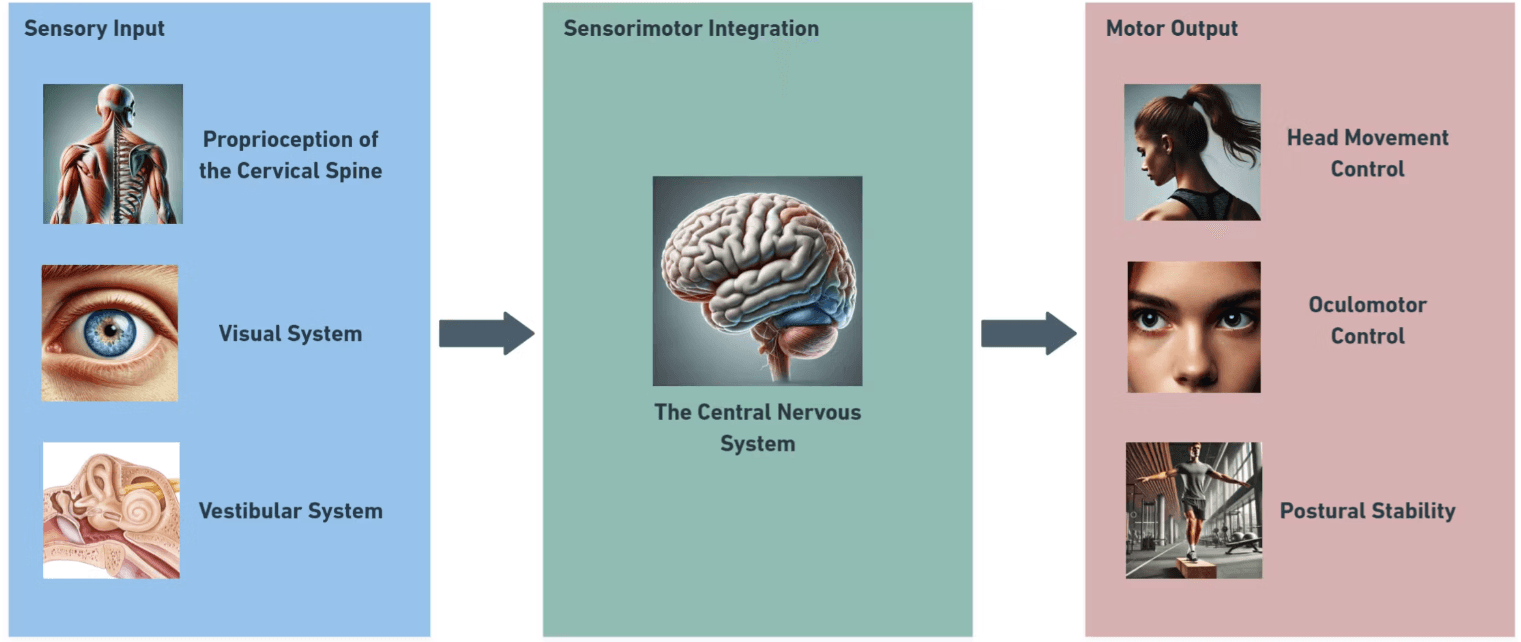What is cervical sensorimotor control?
The importance of assessing sensorimotor control in patients with neck-related complaints.

What is cervical sensorimotor control?
Cervical sensorimotor control refers to how the cervical spine collaborates with the visual and vestibular systems to coordinate head and eye movements and maintain postural stability.
This system integrates visual input from the eyes, proprioceptive input from the cervical spine, and vestibular input from the inner ear to continuously adjust motor output appropriately. Therefore an injury or dysfunction in the cervical spine can have a crucial impact on this integrated system.
Key components of cervical sensorimotor control
Proprioception in the neck
Mechanoreceptors in the cervical muscles, joints and ligaments send proprioceptive feedback and help to monitor and adjust the position and movement of the head and neck.Integration of sensory systems
The proprioceptive sensory system of the cervical spine is interconnected with the visual and vestibular systems via both reflex pathways and direct neural connections within the central nervous system.Motor output
The sensorimotor system generates appropriate motor outputs to coordinate head and eye movements and maintain posture. An injury or dysfunction in the cervical spine can therefore have a crucial impact on the motor output.
Why is cervical sensorimotor control important?
Integration of sensory input and motor output
Cervical sensorimotor control is a finely tuned system vital for integrating neck sensory input and motor output.Coordinating head and eye movements
It allows for smooth tracking and focus by synchronizing head and eye movements, essential for tasks like reading, driving and playing sports.Maintaining balance and postural stability
It ensures coordination between your neck movements and body posture, helping you stay upright and balanced during everyday activities.Important to address dysfunctions
Impaired sensorimotor control can cause symptoms like dizziness, headaches and visual or balance disturbances.
Published on
